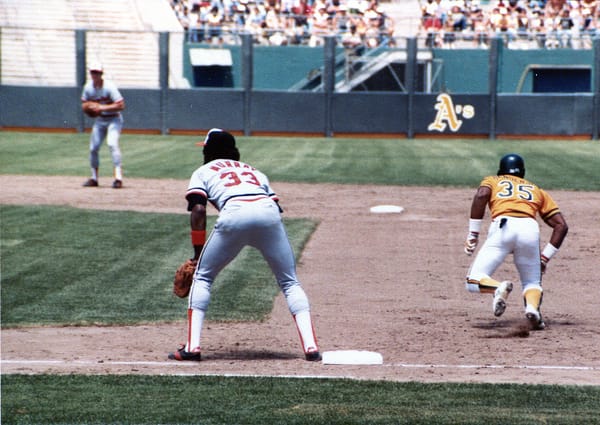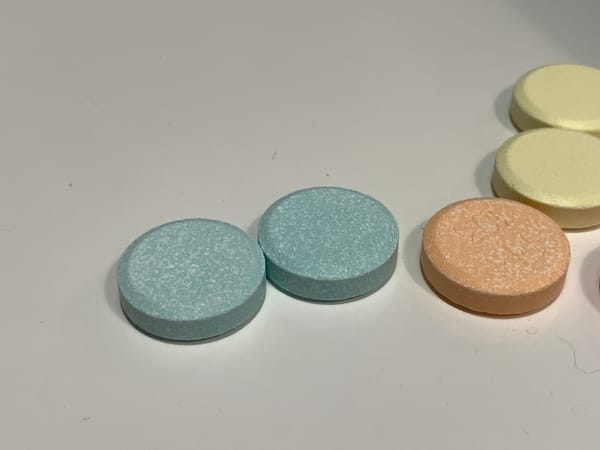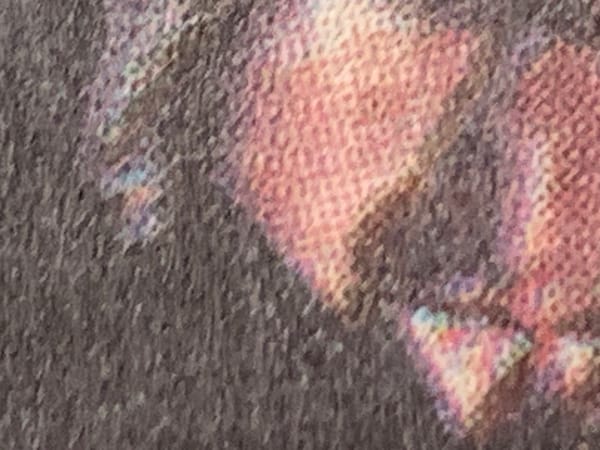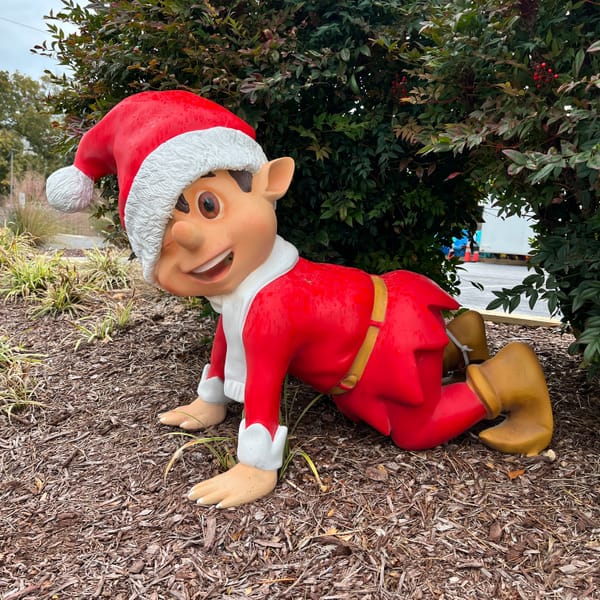Indignity Vol. 3, No. 5: Here Is a Sign of the Times
PUBLIC WORKS DEP'T.
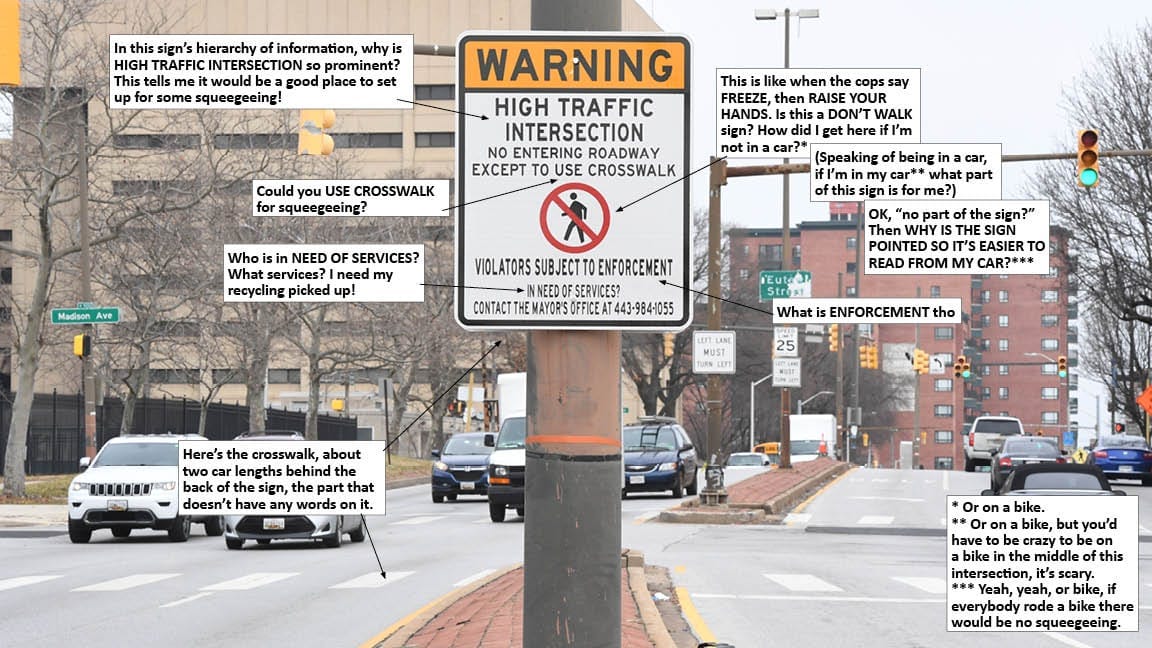
Baltimore's squeegee enforcement leaves things less clear.
THE CITY OF Baltimore—where I pay tax dollars as a resident—is dealing with a phenomenon we used to call “Squeegee Kids,” and are now mostly in agreeance on calling “Squeegee Workers,” who occupy busy interactions and hustle for dollars by squirting your car’s windshield with cleaner and then squeegeeing it, and how about a little something for the effort, guv’nah. It’s work.
I personally deal with the squeegee situation by giving whoever gets up in my window a buck. If I don't have any money, I wave ‘em off. A coupla times they've squeegeed my windshield anyway, and told me have a nice day or whatever, and a coupla times they've just squirted my windshield and left it without squeegeeing, and one time a kid I waved off told me my vehicle was trash and not worth squeegeeing anyway. That hurt my feelings.
There have been all kinds of other anecdotals, plus ones where people got yelled at or squirted personally or got into fights or got their car banged on. There have also been reported incidents of kids getting hit by cars and individuals getting shot and killed, so my city has decided to get its arms around the situation with a new State’s Attorney and an Action Plan where they talk about Youth Panhandling. There doesn’t seem to be a clear explanation of where the word “panhandler” came from, and I always picture a Panhandler as a straight-up spare change requester, usually passive, standing in the median strip near an intersection with a hand-fashioned cardboard sign, whereas the Squeegee-ers are more active, going from car to car. But anyway, the city has a plan:
Dating back as early as the mid 1980’s, Baltimore has grappled with a persistent youth panhandling challenge, specifically youth that participate in free-lance windshield washing at high traffic intersections across the city. In 2019, the Mayor’s Office of Children and Family Success (MOCFS) and the Mayor’s Office of African American Male Engagement (MOAAME) developed a support model for disrupting environments that encourage squeegee activity, while providing wraparound supports to youth.
The idea of this new plan is to divert the individuals participating in squeegee activity to other activity that pays money, and also to school.
MOAAME serves as the lead agency responsible for the case management and intensive outreach to disconnected young men and boys. Since early 2020 MOAAME has:
Identified 186 disconnected youth who squeegee
Re-engaged 43 youth into school
Secured birth certificates, social security cards and/ or IDs for 29 youth
Employed 27 youth who distributed 10,000 meals as part of the city’s Covid-19 response
Registered 73 youth in the summer YouthWorks program
Placed 39 youth with permanent employers
Connected 50 youth with a Credible Mentor for intentional guidance and support
So the city is amping up this protocol and we’ll see how it goes. Meanwhile, we have these new street signs:
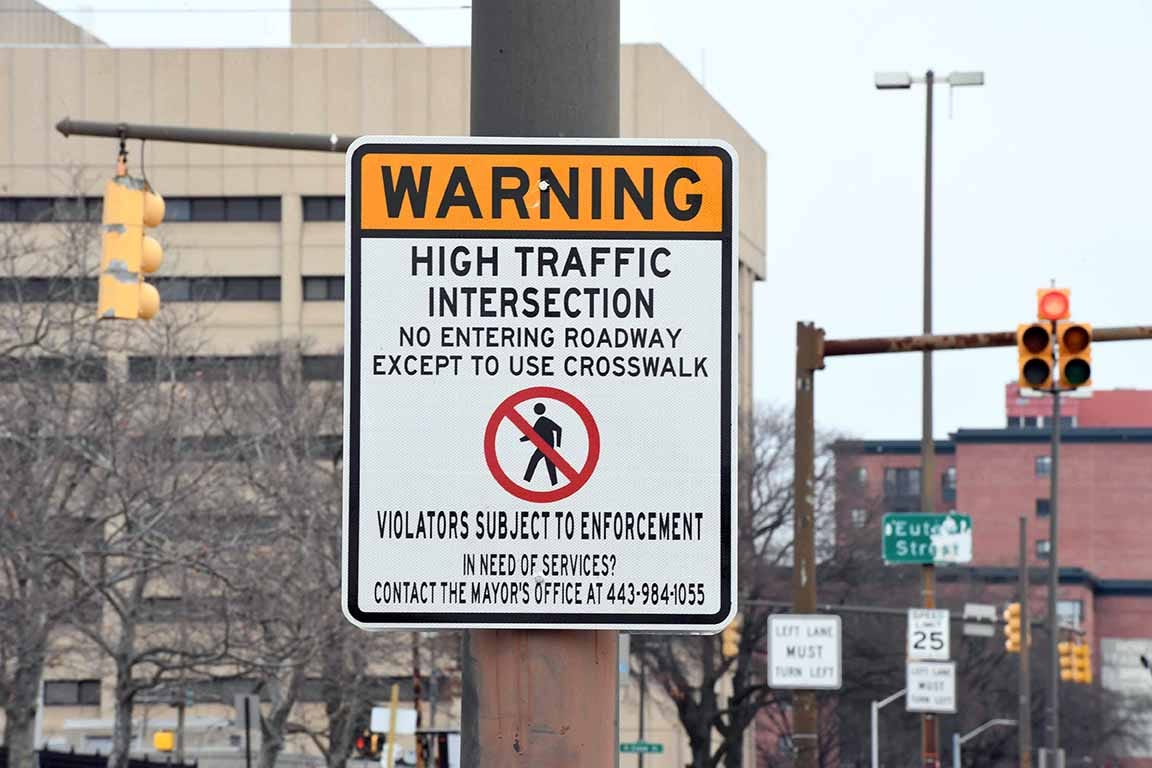
Richly encoded text! When the city announced its anti-squeegee initiative, it said its squeegee exclusion areas "will be marked with signage labeling them as no-panhandling zones." That is not what the signs ended up saying at all. Instead, it's basically a NO PEDESTRIANS sign with about 25 words of confusion. At best it’s sort of a NO JAYWALKING.
It makes no sense if you don't know what it's for. It might make even less sense if you do know what it's for. Are you allowed to enter the roadway, using the crosswalk, if you then use the crosswalk as a spot from which to do squeegeeing? Who is it supposed to be warning? It is mounted facing traffic, for the motorists to see, rather than being mounted to be read from the crosswalk, which is about 20 feet away from the sign. If you are standing in or near the crosswalk, you’re looking at the back of the sign and you can’t read it.
And what are the motorists supposed to do, on seeing the sign? They're motorists, they're already in the roadway, inside their cars. There doesn't seem to be any point in telling them not to enter the roadway on foot, and there's even less point in offering them services. The city did threaten to cite drivers "who engage with panhandlers and obstruct traffic," but it isn't trying to divert the squeegee customers away the squeegee trade into educational or employment opportunities.
As a concerned motorist, I called the IN NEED OF SERVICES? number on the sign and it connected me to the aforementioned Mayor’s Office of African American Male Engagement. The person who answered told me of their mission, consistent with the things stated on the site, and on the Office’s social media:
Today, disallowed zones go into effect at six intersections across Baltimore City. We are out with our partners engaging individuals who panhandle, equipped with employment opportunities and other resources.
— African American Engagement Baltimore (@aamebaltimore) 4:32 PM ∙ Jan 11, 2023
I hadn't thought of the intersection where the pictured sign is as being a locus of Squeegee Youth. On my way to find it, I went to an intersection where I have interacted with squeegee-ers, and it didn't have one of those signs yet. The spot where the kids would be was occupied by a bunch of adults: one police officer, people who appeared to be outreach personnel, plus a person who appeared to be a reporter asking questions and writing stuff.
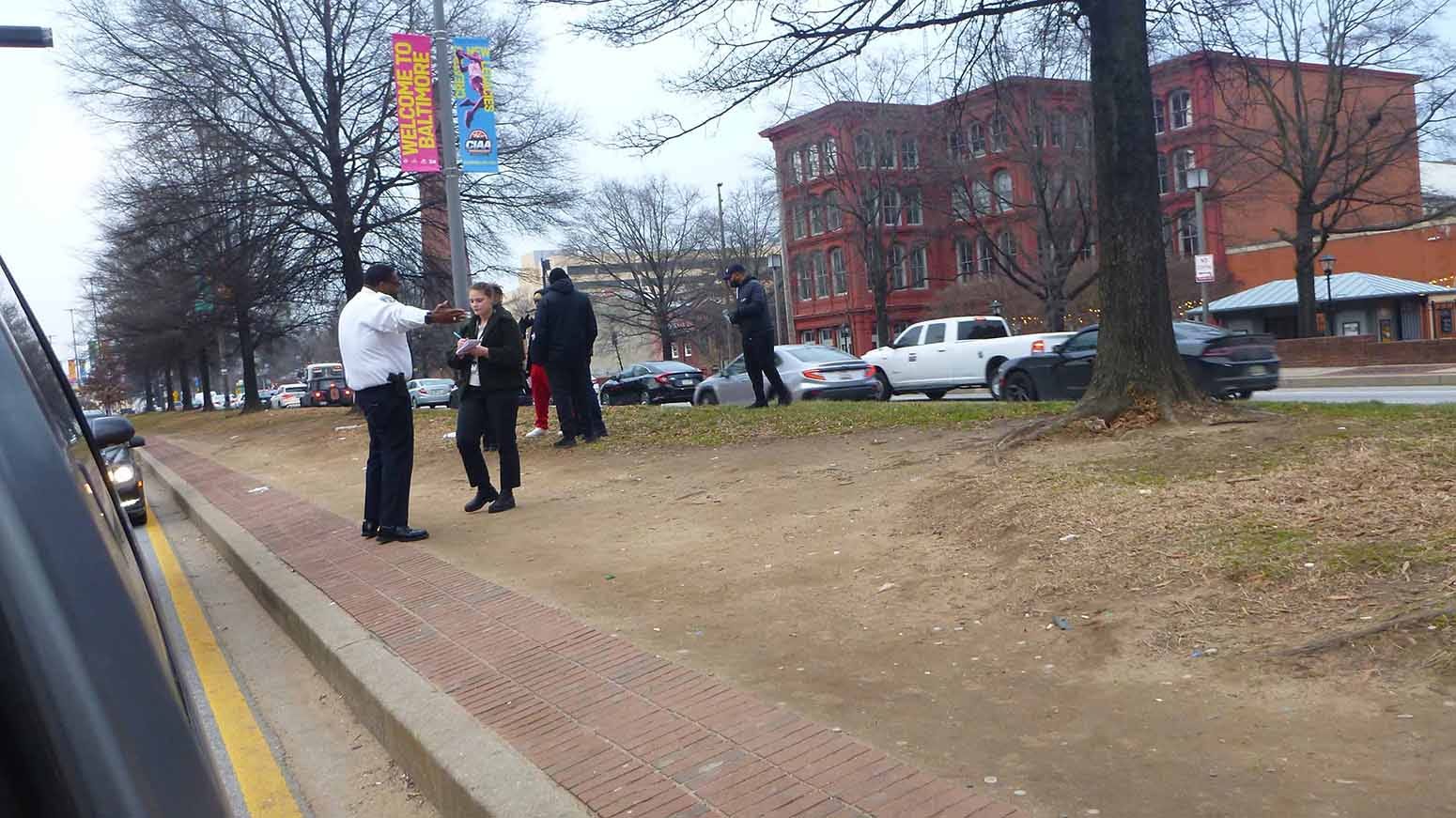
I passed by the group and headed north, looking for the official sign.
At a red light, some boys out doing squeegee approached me, and I waved them off. They were shielded from the view of the outreach personnel by a structure in the median. A day later, there were a few kids at the squeegee spot. They did not have squeegees or squirt bottles. They were in friendly, relaxed conversation with a police officer, who was telling them that getting locked up was now a possibility.

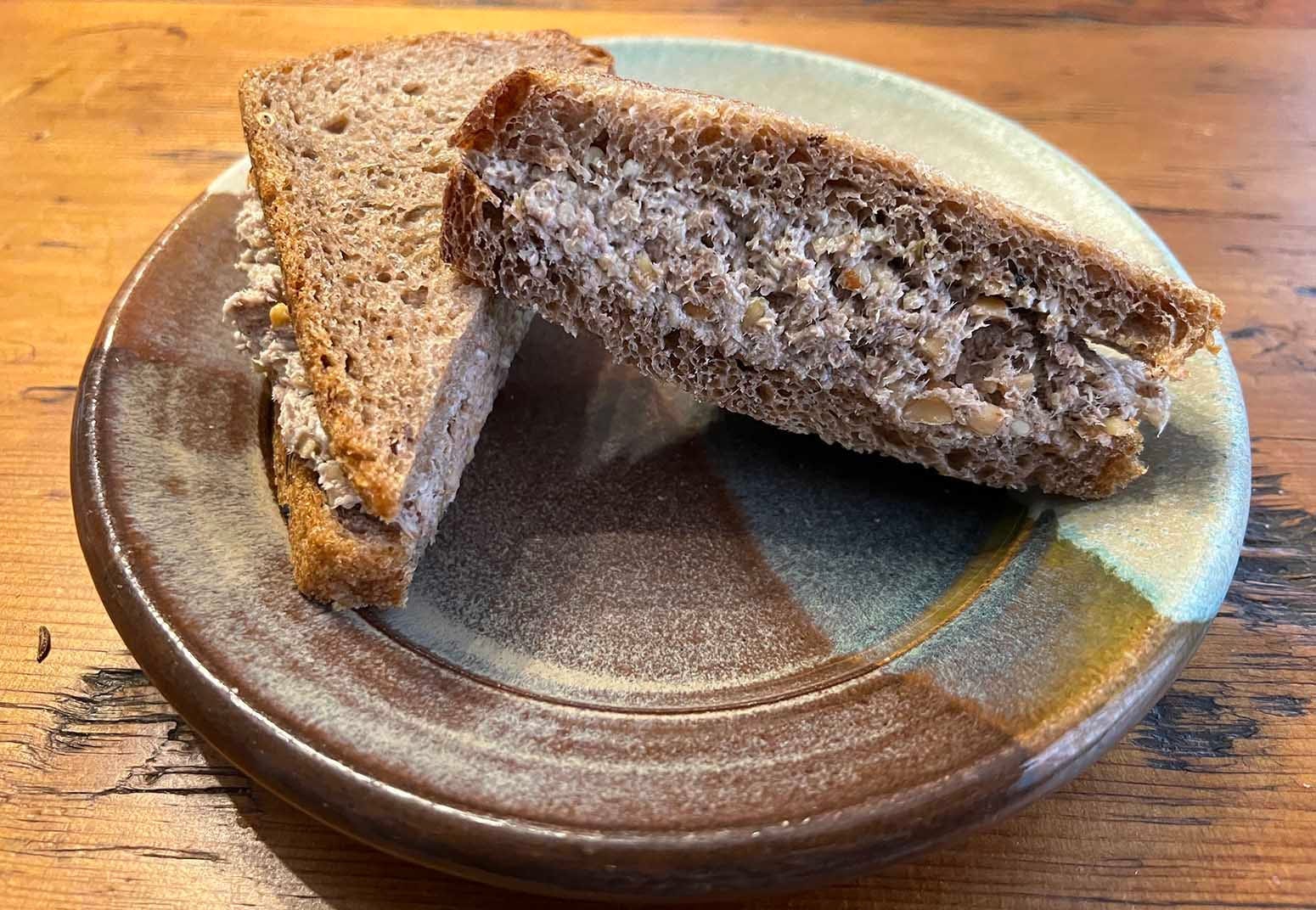
CORRESPONDENCE DEP'T.
In response to SANDWICH RECIPE DEP’T.
I have never seen a picture of one of the sandwiches in the newsletter, yet you do solicit the pictures and people do read the newsletter and I'm a lawyer by profession so I *know* how crazy people are.
So I gotta ask.
What do you do with the pictures of the sandwiches?
—Craig Burley
Dear Lawyer,
If anybody takes the time to send us a picture of a sandwich, we run it! We don’t get a lot of sandwich photos. Seems like people are just shy about their sandwiches, or maybe everybody forgets to take the picture before they enjoy their delicious sandwich! We will take the occasion of your question as a prompt for an Appeal to The Readers: If you decide to prepare and enjoy a sandwich inspired by our Sandwich Recipe Dep’t., kindly send a picture to us at indignity@indignity.net.
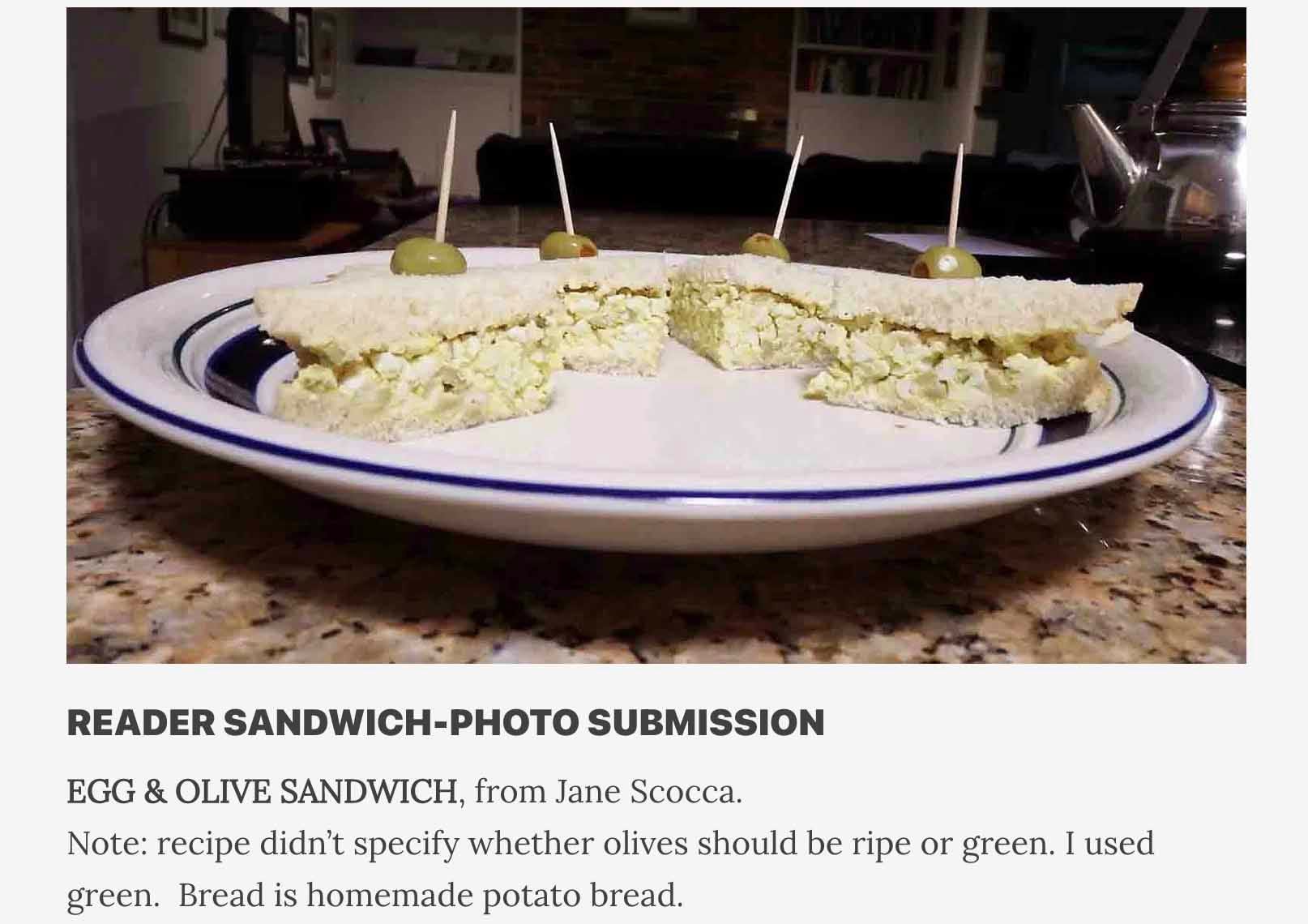

SANDWICH RECIPE DEP’T.
WE PRESENT INSTRUCTIONS for the assembly of select sandwiches from The Raleigh Recipe Book, published by The Ladies of Christ Church, Raleigh, NC, 1916, found in the public domain and available at archive.org for the delectation of all.
RED DEVIL SANDWICH
1 lb cheese
1 can Campbell's tomato soup
Worcestershire sauce
Butter, salt, red pepper
1 egg
Cut cheese, put cheese and soup in double boiler, melt, season with red pepper, salt, Worcestershire. Beat in egg. Pour on toast.
—Louise T. Busbee
If you decide to prepare and enjoy a sandwich inspired by these offerings, kindly send a picture to us at indignity@indignity.net.

Thank you for reading Indignity! We appreciate your interest and support, and we encourage you to find more of our work over at Popula.

